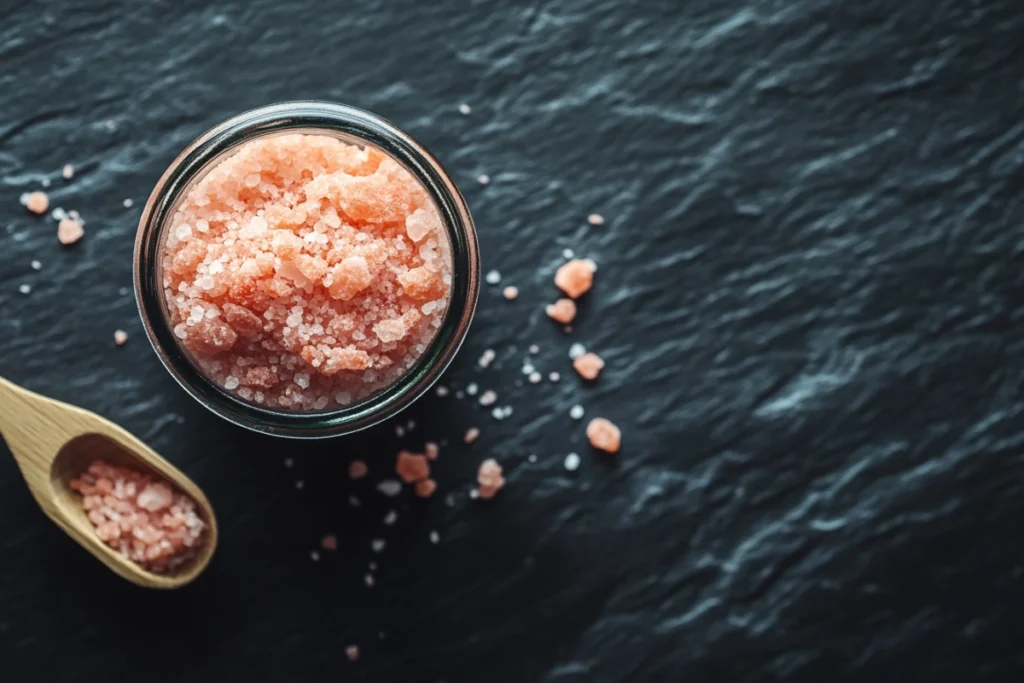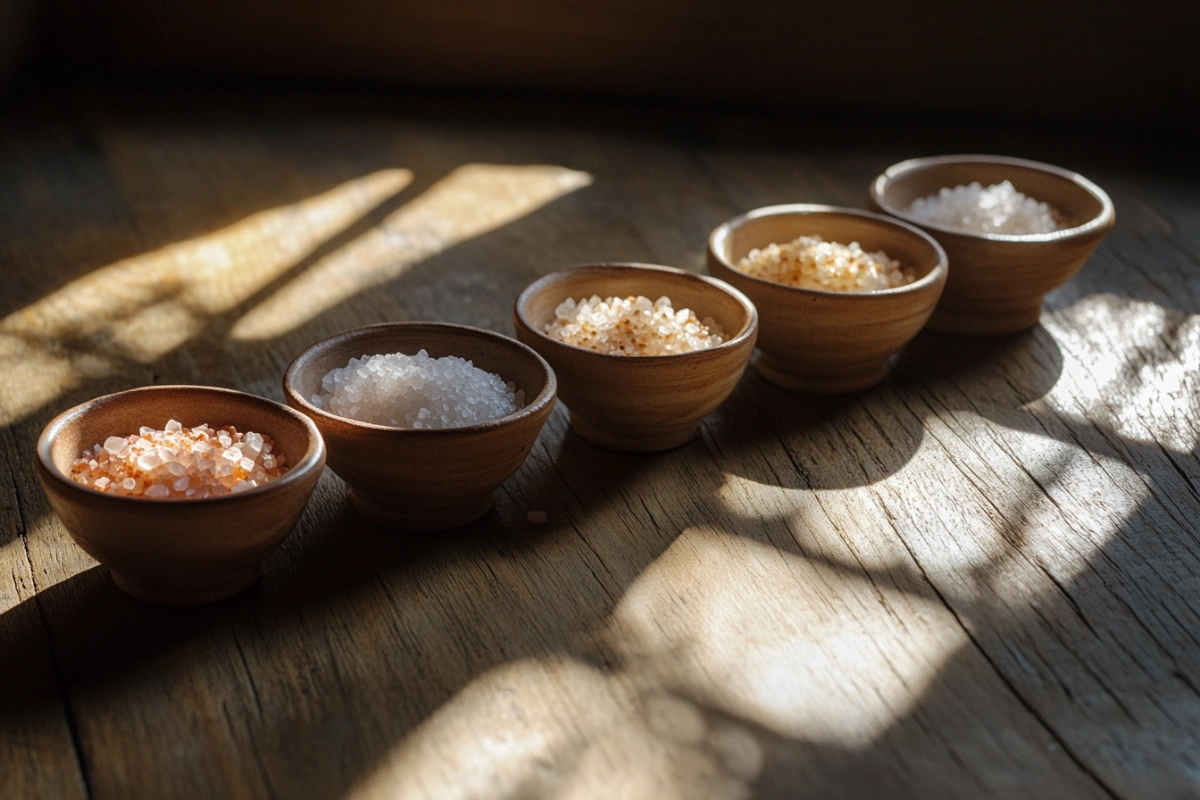When it comes to adding a pinch of perfection to your dishes, fleur de sel reigns supreme among salts. Renowned for its delicate texture, subtle flavor, and artisanal charm, this specialty salt is a favorite of chefs and food lovers alike. But what happens when you can’t find it or simply need an alternative? This article dives into what is a good substitute for fleur de sel, uncovering practical and flavorful options that will elevate your culinary creations.
From popular salts like Maldon and Himalayan pink salt to lesser-known gems like Celtic sea salt, we’ll explore their unique qualities, how they compare to fleur de sel, and when to use each. Let’s get started!
Understanding Fleur de Sel and Its Uses
What Is Fleur de Sel?
Fleur de sel, meaning “flower of salt” in French, is a premium sea salt harvested from the surface of salt ponds, primarily in France’s Brittany region. Unlike regular salt, which forms at the bottom of these ponds, fleur de sel crystallizes on the surface, creating delicate, flaky grains. Its moist texture, mild salinity, and slight sweetness set it apart from other salts.
The process of gathering fleur de sel is labor-intensive, requiring skilled workers to gently skim the salt before it sinks. This meticulous harvesting contributes to its exclusivity and high cost.
Common Culinary Applications
This gourmet salt is more than just a seasoning—it’s a finishing touch. Sprinkling fleur de sel over a dish enhances its flavors, adding a subtle crunch and a burst of saltiness that complements both savory and sweet recipes.
- Savory dishes: Chefs use fleur de sel to elevate roasted vegetables, grilled meats, and seafood.
- Desserts and baked goods: Its unique flavor profile works wonders in salted caramels, cookies, and chocolates.
- Cocktail garnishes: A pinch of fleur de sel can even add sophistication to margaritas and other beverages.
Whether you’re cooking a fancy meal or whipping up a batch of cookies, fleur de sel offers a magical touch that transforms ordinary dishes into extraordinary culinary experiences.
Top Substitutes for Fleur de Sel
Finding the perfect substitute for fleur de sel can seem daunting, but several salts come close to replicating its unique qualities. Whether you’re in a pinch or looking for a cost-effective alternative, the following options will help you maintain your culinary masterpiece.
Maldon Sea Salt
Maldon sea salt is often considered the closest match to fleur de sel. Known for its delicate, pyramid-shaped flakes, it offers a clean, crisp flavor and dissolves quickly. This makes it ideal for finishing dishes, much like fleur de sel.
- How It Compares: Both salts are hand-harvested and retain their natural minerals, enhancing flavor without overwhelming the dish.
- Best Uses: Sprinkle it over grilled vegetables, meats, or even desserts like caramel or chocolate for that gourmet touch.
Kosher Salt
Kosher salt is a versatile and widely available alternative. While its granules are coarser than fleur de sel, it provides a clean, neutral taste that works well in many recipes.
- How It Compares: Lacks the subtle sweetness of fleur de sel but compensates with its accessibility and affordability.
- Best Uses: Use it in brines, marinades, or to season meats before cooking.
Himalayan Pink Salt

This visually striking salt adds both aesthetic appeal and mineral-rich flavor to dishes. Harvested from ancient salt mines, it boasts a mild salinity that complements a variety of cuisines.
- How It Compares: While slightly less delicate, its unique mineral profile offers a subtly sweet aftertaste, akin to fleur de sel.
- Best Uses: Great for seasoning seafood, salads, or as a decorative finish on desserts.
Sea Salt Flakes
Sea salt flakes mimic the light, flaky texture of fleur de sel. They’re also natural and minimally processed, preserving their trace minerals.
- How It Compares: Lighter and less moist than fleur de sel, but similar in appearance and usage.
- Best Uses: Works beautifully as a finishing salt for steaks, roasted vegetables, or artisan bread.
Celtic Sea Salt
This unrefined salt is another strong contender, offering a moist texture and complex flavor. Its natural harvesting process preserves its mineral content, making it a health-conscious choice.
- How It Compares: Slightly coarser but shares fleur de sel’s signature moist texture.
- Best Uses: Use it for seasoning fish, poultry, or even in savory pastries.
How to Choose the Best Substitute
The key to choosing the right substitute lies in understanding the dish and the role fleur de sel plays within it. Here’s how to make the best choice:
Factors to Consider
- Flavor Profile: Fleur de sel has a mild, balanced salinity with a hint of sweetness. Match this flavor as closely as possible by using unrefined or mineral-rich salts.
- Texture: The flaky, moist texture of fleur de sel is crucial for that final burst of flavor. Look for substitutes like Maldon or Celtic sea salt to replicate this quality.
- Appearance: When presentation matters, opt for visually appealing salts like Himalayan pink or sea salt flakes.
Matching Substitutes to Dishes
Each dish calls for a unique touch, and the right substitute can enhance or alter its character:
- For savory dishes: Maldon sea salt or Celtic sea salt work wonders on meats and vegetables.
- For desserts: Himalayan pink salt or sea salt flakes add a beautiful contrast and subtle salinity.
- For garnishes: Choose salts that enhance the dish’s visual appeal while complementing its flavor.
Selecting the right alternative ensures that you don’t miss the magic of fleur de sel in your culinary adventures.
FAQs About Fleur de Sel and Substitutes
When it comes to fleur de sel and its alternatives, many questions often arise. Let’s answer some of the most common queries to help you make informed choices in your kitchen adventures.
Can I Use Table Salt Instead of Fleur de Sel?
Technically, yes, but table salt lacks the nuanced flavor and texture of fleur de sel. Table salt is finely ground and often processed with anti-caking agents, giving it a sharp salinity. It’s best reserved for cooking rather than as a finishing salt. For dishes that highlight the salt’s flavor, opt for substitutes like Maldon sea salt or sea salt flakes instead.
Is Fleur de Sel Healthier Than Other Salts?
Fleur de sel is less processed than regular table salt, retaining trace minerals like magnesium and calcium. While it isn’t significantly “healthier” in terms of sodium content, its purity and mineral richness can be a plus. Substitutes like Celtic sea salt or Himalayan pink salt share similar benefits, making them great alternatives.
Why Is Fleur de Sel So Expensive?
The high cost of fleur de sel stems from its labor-intensive harvesting process. Workers carefully hand-skim the delicate salt crystals from salt ponds. Additionally, it’s only produced in certain regions under specific conditions, adding to its exclusivity. Substitutes like Maldon sea salt offer a more affordable way to replicate its qualities.
How Should Substitutes Be Stored?
Keep your fleur de sel alternatives in a cool, dry place away from moisture and sunlight. Airtight containers are ideal to maintain the texture and flavor of salts like sea salt flakes, Maldon salt, or Himalayan pink salt. Proper storage ensures your salts stay fresh and clump-free.
For more tips on gourmet salts, check out our detailed guide to culinary salts on Medium Recipes.
Creative Uses for Fleur de Sel Substitutes

Substituting fleur de sel isn’t just about finding the closest match—it’s an opportunity to experiment with new flavors and textures. Let’s explore some innovative ways to use these substitutes in your kitchen.
Beyond Cooking – Other Uses
Fleur de sel substitutes aren’t just for savory dishes—they can shine in unexpected places:
- Desserts: Sprinkle Himalayan pink salt or Maldon flakes over brownies, cookies, or caramel to create a delightful contrast.
- Cocktail Garnishes: Add a pinch of sea salt flakes to margaritas or Bloody Marys for a salty twist.
Experimenting with Flavors
Enhance your dishes by combining salt with herbs, spices, or citrus zest:
- Infused Salts: Blend sea salt flakes with dried rosemary, garlic powder, or lemon zest for a gourmet touch.
- Flavored Finishes: Use these custom salts to elevate roasted vegetables, grilled fish, or even popcorn.
These creative twists ensure that you’ll not only answer the question, what is a good substitute for fleur de sel?, but also discover new culinary favorites.
Conclusion – Finding the Perfect Substitute
Finding the right substitute for fleur de sel doesn’t have to be complicated. Whether you’re looking for a cost-effective alternative or something more accessible, options like Maldon sea salt, Celtic sea salt, and Himalayan pink salt provide excellent stand-ins. These substitutes not only replicate the flaky texture and nuanced flavor of fleur de sel but also bring their unique qualities to the table.
When considering what is a good substitute for fleur de sel, remember to think about the dish you’re preparing. For desserts, Himalayan pink salt or sea salt flakes work beautifully. For savory recipes, Celtic sea salt or kosher salt might be your best bet. With these versatile options, you’ll always have a way to add a gourmet touch to your cooking.
Experimenting with substitutes can open up a world of flavors and possibilities, allowing you to discover what works best for your kitchen and palate.
Final Tips for Using Salt Substitutes
Balancing Flavor
One of the most important aspects of using salt substitutes is achieving the right balance of flavor. Remember, salts like Maldon or Celtic sea salt may have slightly different intensities compared to fleur de sel. Start with a small pinch, taste, and adjust as needed to avoid overpowering your dish.
- For savory dishes: Use a light touch when seasoning roasted meats or vegetables.
- For desserts: A small sprinkle can enhance sweetness without overshadowing it.
Storing Your Salt Substitutes
Proper storage ensures your substitutes stay fresh and effective:
- Use airtight containers to prevent clumping and maintain texture.
- Store salts in a cool, dry place to preserve their unique qualities.
Pairing Substitutes with Specific Dishes
Different substitutes shine in different dishes. For example:
- Use Himalayan pink salt to garnish chocolate truffles or caramel sauce.
- Sprinkle Maldon sea salt over a perfectly grilled steak for a gourmet finish.
- Enhance your seafood dishes with Celtic sea salt to bring out their natural flavors.
By exploring these substitutes and tips, you’ll never feel limited by the absence of fleur de sel. Instead, you’ll be empowered to make informed, creative choices in your cooking.
Exploring Alternative Salts and Their Unique Qualities
When considering what is a good substitute for fleur de sel, it’s worth diving deeper into the unique qualities of different salts. Each substitute offers its own flavor, texture, and culinary advantages, making it a versatile addition to your pantry.
Artisan Salts for the Perfect Finish
Artisan salts like Maldon and Celtic sea salt are crafted with care, offering gourmet appeal for any dish.
- Maldon Sea Salt: With its pyramid-like flakes, Maldon adds a delicate crunch that mimics fleur de sel. Its light, clean flavor is perfect for finishing everything from roasted vegetables to grilled meats.
- Celtic Sea Salt: This moist, mineral-rich salt is an excellent choice for enhancing seafood and savory dishes. Its slightly briny flavor pairs well with light, fresh ingredients.
Exploring Global Options
If you’re looking to expand your horizons, salts from around the world provide exciting alternatives:
- Himalayan Pink Salt: Not only does it look stunning, but its balanced salinity and trace minerals add depth to sweet and savory dishes alike.
- Japanese Sea Salt: Known for its fine texture and mild flavor, this salt complements delicate dishes like sushi or steamed vegetables.
By exploring these artisan and global options, you’ll discover substitutes that go beyond mimicking fleur de sel, offering their own culinary magic.
Experimenting with Flavored Salts and DIY Substitutes
If you’re feeling adventurous, flavored salts and DIY options can add a personal touch to your cooking. These creative substitutes not only answer the question what is a good substitute for fleur de sel? but also let you customize the flavors to suit your dishes.
Flavored Salts
Infusing salts with herbs, spices, or citrus zest is an easy way to elevate your recipes:
- Garlic-Infused Salt: Perfect for roasted meats or hearty soups.
- Citrus Zest Salt: Adds a bright, zippy note to fish or salads.
- Herb-Infused Salt: Rosemary or thyme salts pair beautifully with potatoes or bread.
DIY Salt Blends
Creating your own salt blends allows you to replicate fleur de sel’s unique qualities while experimenting with flavor:
- Combine flaky sea salt with a pinch of sugar for a sweet-savory balance.
- Mix coarse kosher salt with crushed dried herbs for a rustic finish.
- Add a touch of smoked paprika to sea salt for a smoky, bold flavor.
These options let you turn everyday dishes into something extraordinary, all while making the most of your salt substitutes.

